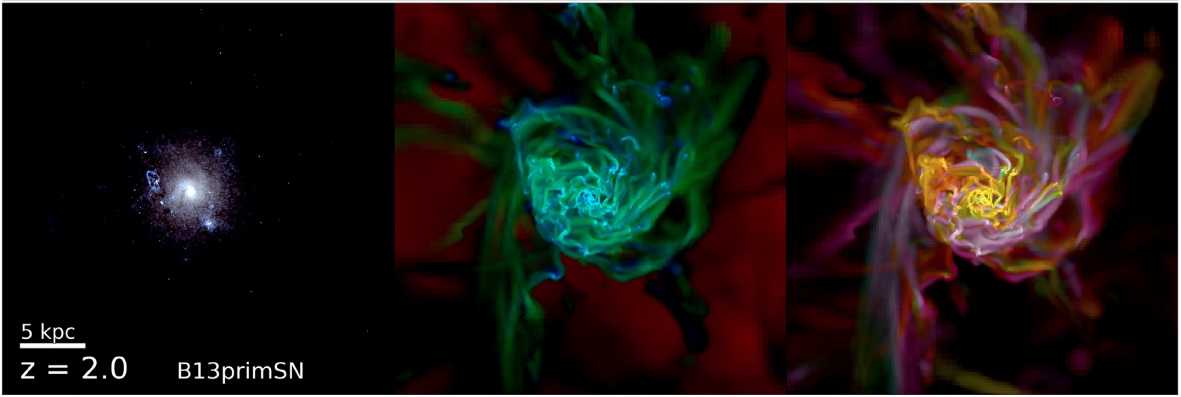Understanding Galactic Dynamos
Spiral galaxies, including ours, have significant large-scale magnetic fields with energy densities comparable to those of turbulent and thermal motions. Therefore, these magnetic fields can play a crucial role in a wide range of internal galactic processes. The dominant theory attributes these magnetic fields to a large-scale dynamo.
Prof. Brandenburg and Dr. Ntormousi's, postdoctoral fellow at IA-FORTH and currently tenured researcher in Scuola Normale Superiore in Pisa (Italy), review addresses the current status of dynamo theory and discusses numerical simulations designed to explain either particular aspects of the problem, or to reproduce galactic magnetic fields globally.

Their main conclusions can be summarized as follows:
- Contrary to theoretical expectations, idealized direct numerical simulations produce mean magnetic fields, whose saturation energy density tends to decline with increasing magnetic Reynolds number. This problem is still unsolved.
- Large-scale galactic magnetic fields of microgauss strength can probably only be explained if helical magnetic fields of small or moderate length scales can be ejected (by some sort of outflow) or destroyed rapidly.
- Small-scale dynamos are essential throughout a galaxy's life and probably provide strong seed fields at the early stages of galaxy formation.
- The circumgalactic medium (CGM) can play a critical role in driving dynamo action at small and large length scales. The interactions between the galactic disk and the CGM may provide important insights into our understanding of galactic dynamos.
The authors expect future research in galactic dynamos to replace the idealized boundary conditions used so far with the cosmological history of galaxies and their interaction with the CGM.
Article: A. Brandenburg & E. Ntormousi "Galactic Dynamos", 2023, Annual Review of Astronomy and Astrophysics, Volume 61, Issue , pp. 561-606
